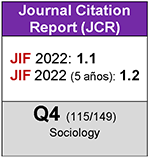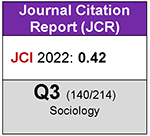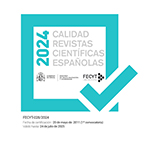The Genesis of the Second Demographic Transition in Rural Aragon (1970-2012)
DOI:
https://doi.org/10.5477/cis/reis.161.63Keywords:
Pioneers, Rural Population, Second Demographic Transition, Family SizeAbstract
The aim of this paper is to analyze the development of the Second Demographic Transition in a rural area, consisting of nine Aragonese villages (Spain), in order to examine its distinctive characteristics with respect to the theoretical framework of the Second Demographic Transition and the Theory of the Reproductive Revolution. Data were extracted from a longitudinal database and from individual surveys. The results suggest that the study area was incorporated into the Second Demographic Transition in the mid-1970s, along with the rest of Spain. At the same time, similarities are found in the evolution of demographic variables with other Western areas, especially regarding the popularization of contraception and recreational and prenuptial sex. However, their socioeconomic characteristics, associated with rural and agricultural environments, appear to have conditioned the educational and occupational results.
Downloads
Downloads
Published
How to Cite
Issue
Section
License
Copyright (c) 2024 Revista Española de Investigaciones Sociológicas

This work is licensed under a Creative Commons Attribution-ShareAlike 4.0 International License.
Permite Compartir — copiar y redistribuir el material en cualquier medio o formato, Adaptar — remezclar, transformar y construir a partir del material para cualquier propósito, incluso comercialmente.








